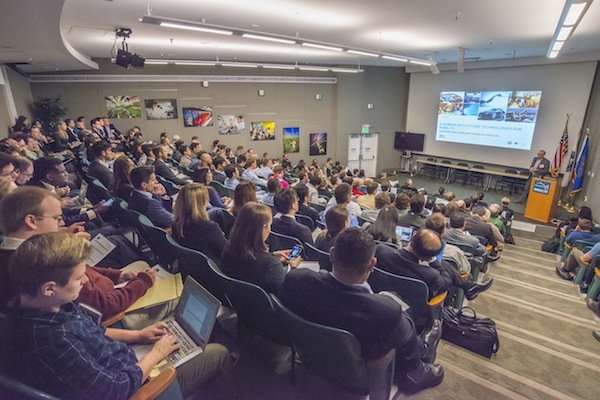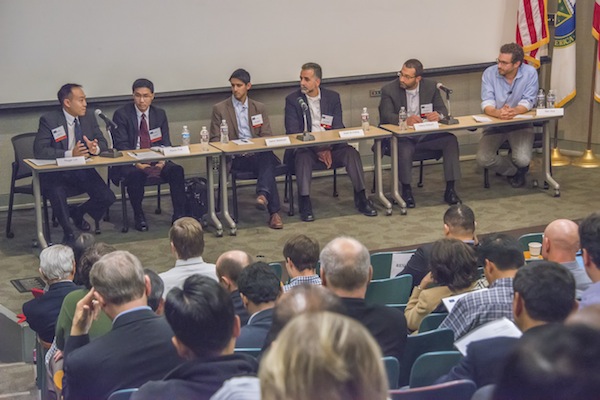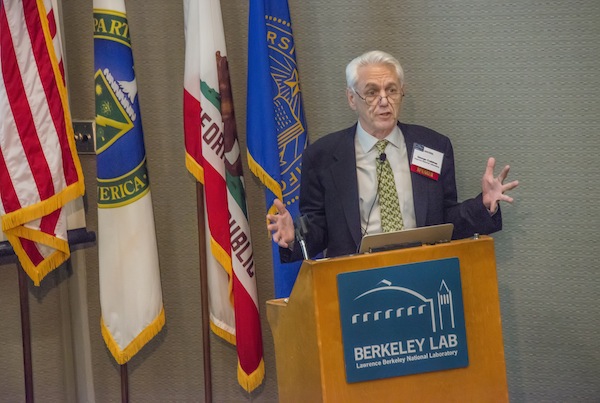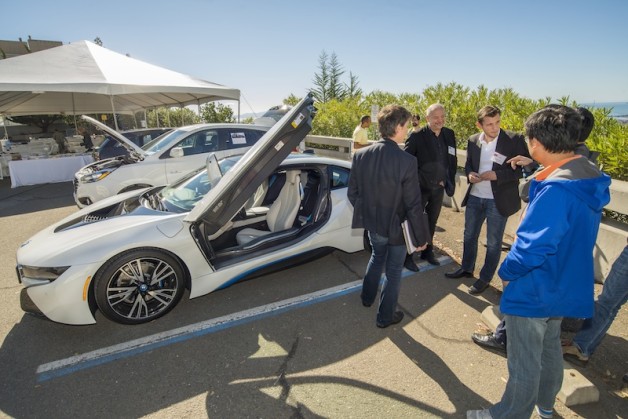
More than 200 people attended the 2015 Bay Area Battery Summit at Lawrence Berkeley National Laboratory on Nov. 3 to discuss how to promote transformative energy storage technologies. The purpose of the Summit was to bring scientists together with policymakers and business to discuss what more could be done—whether in labs, universities, industry, Congress, or state and local governments—to accelerate vehicle electrification and grid storage.
Speakers included Cheryl Martin, the former acting director of ARPA-E, Eileen Tutt, executive director of the California Electric Transportation Coalition, and executives from BMW and Tesla Motors, as well as Berkeley Lab battery scientist Venkat Srinivasan, who gave an overview of the changing battery landscape.
“At the end of the day I felt like I learned something about what we, as a community, need to tackle if we are serious about electrification,” said Srinivasan, who was the main force behind the summit. “And the path is not just finding the new magic battery but is in understanding how to bring what we have today to market while continuing to feed the pipeline. Policies need to allow for this to happen.”

Cyclotron Road Director Ilan Gur moderated a panel on bringing technologies to market.
Srinivasan said he was pleased with the capacity turnout and the healthy exchange of ideas. Co-organizers of the event were CalCharge, the Dept. of Energy’s Joint Center for Energy Storage Research (JCESR), and the Electric Power Research Institute. The event was also sponsored by the Bay Area Council.
JCESR Director George Crabtree gave an update on the search for the next-generation battery, nearly three years into the hub’s five-year charter. He noted that it took 20 years for the lithium-ion battery to come out, from the time it was conceived in 1970 to 1991 when Sony introduced it. “It looked nothing like its original conception,” he said. “It performed about twice as good as the best battery in 1991, so it was a breakthrough.”

JCESR Director George Crabtree
Since then, lithium-ion batteries have seen a linear increase in energy density and decrease in cost. But those trends won’t continue indefinitely. He outlined the four technologies that JCESR is pursuing for transportation and the grid.
Uwe Higgen, the head of the BMW USA technology office, gave a glimpse into BMW’s vision for the future of mobility, which includes cars powered by electricity, automated vehicles that drive almost accident-free, and cars that are more integrated into the digital ecosystem.
He also described the company approach for pursuing greater adoption of electric vehicles, including using gamification to encourage people to be more efficient, giving more detailed information on charging and route-planning, and making electric driving fun.
“Two years ago all of us thought getting the cost down was a matter of increasing energy density. That all changed when Tesla announced its Gigafactory,” Srinivasan told the packed room. “Batteries are getting considerably cheaper, a lot cheaper than what people thought was possible.”

Several electric vehicles were on display, including a BMW i8. (Photos by Roy Kaltschmidt/Berkeley Lab)